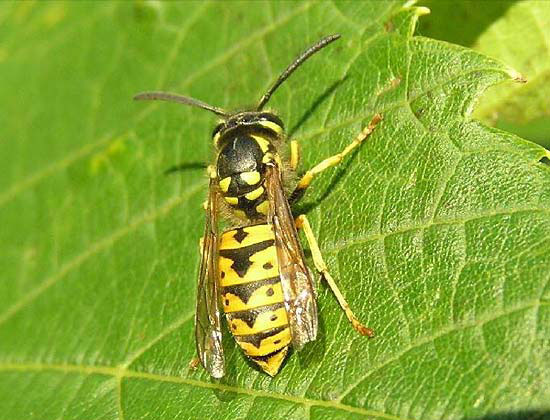
ORDER: Hymenoptera
FAMILY: Vespidae
Wasps are a social insect and seasonal pest, commom throughout the uk, they live in large structured colonies and are mainly active between july and late october. Wasps can become a real nuisance during summer months, entering premises foraging for food and nest matter. The females and workers have a sting, but males do not sting. The sting is painful and may induce an allergic reaction in some people.
Size, Shape and Colour: The workers measure 12-16mm, the females are 17-20mm and the males 13-17mm. They are very similar in markings and colour to the Common Wasp, but can be told apart from the dark markings on the front of their heads. The German Wasp has three spots (as shown in images above) whereas the Common Wasp has a dark mark shaped like an anchor.
Biology: A female (queen) starts the nest, building 20–30 cells before initial egg-laying. This phase begins in spring, depending on climatic conditions. Once the larvae have hatched as workers, they take up most of the colony’s foraging, brood care and nest maintenance. A finished nest can be approximately 20–30 cm across and contain around 3,000 individuals. Each wasp colony includes one queen and a number of sterile workers. Colonies usually last only one year, all but the queen dying at the onset of winter.
Preferred Foods: The German Wasp lives mainly on a diet of insects, chiefly flies, mosquitoes and caterpillars. It also likes sweet juices from flowers and over-ripe fruit.
Habitat: This wasp nests in open unwooded country for example meadows, lawns and compost heaps. The nest would normally be near the ground but are sometimes found higher in dark places such as between walls, hollow bricks or nesting boxes. These wasps frequent various localities, nearing the autumn they may invade households, greengrocers’ shops, delicatessens and confectioners.

